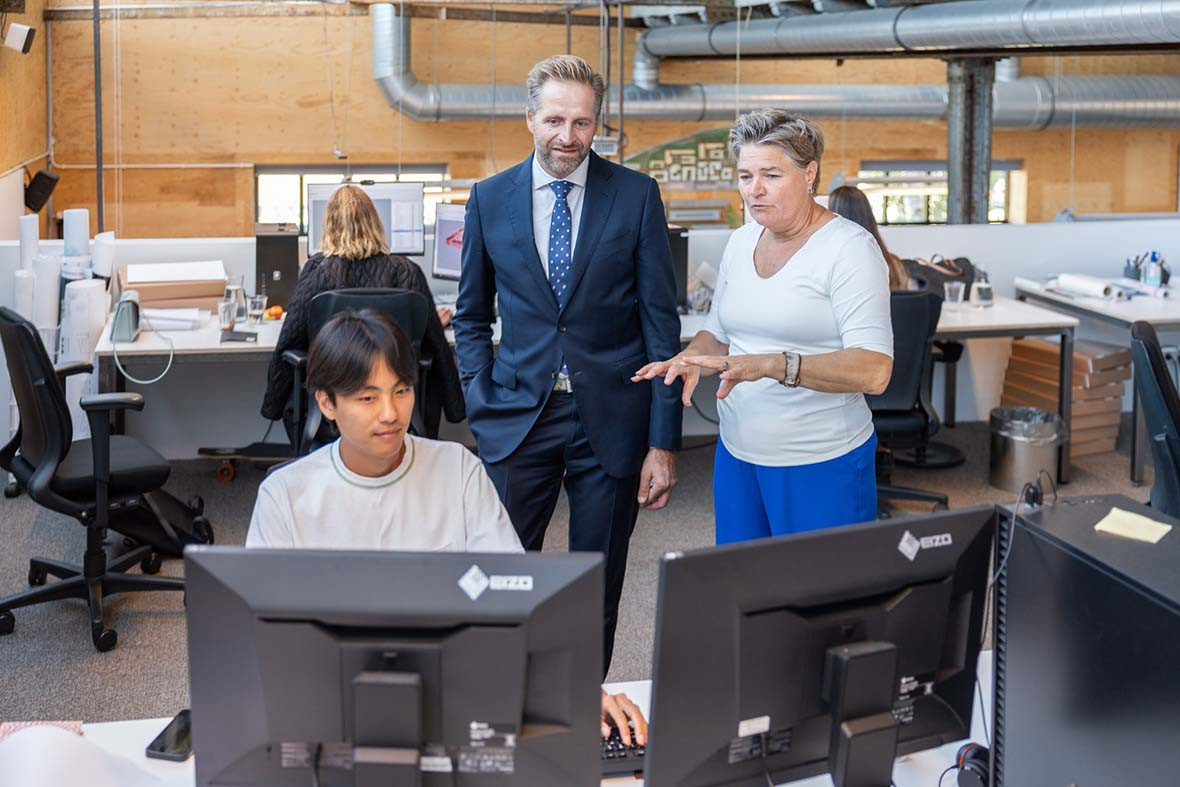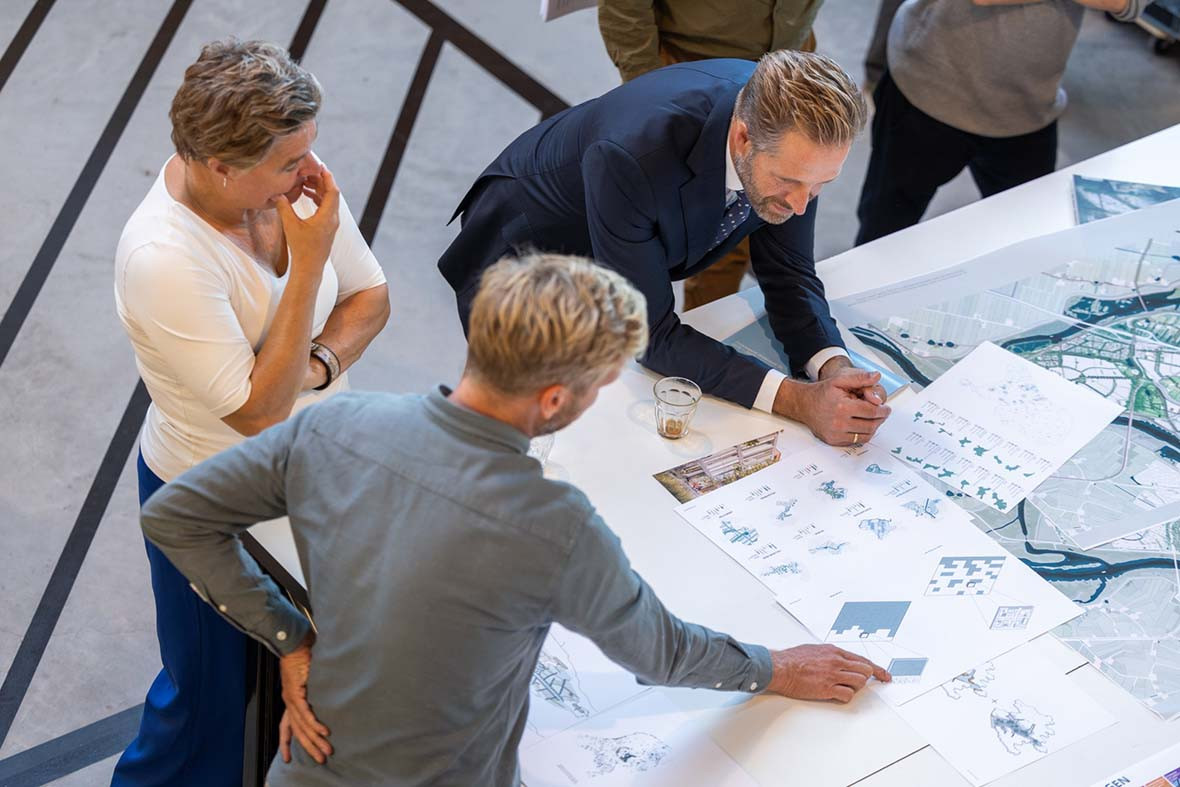


Last Wednesday, we welcomed outgoing minister Hugo de Jonge to our office in Hilversum. The afternoon was organized on the initiative of BSNP/NVTL to introduce the minister to design practice. Joining us for this successful event were colleagues from the offices of Lola, Flux, Felixx, Defacto, Witteveen+Bos, and Ben Kuipers, as well as Joeri de Bekker (NVTL), Eric van der Kooij (BNSP), Maurits de Hoog (What-if), and the Dutch Ministry of the Interior and Kingdom Relations. It is useful to share thoughts on how, as a professional community of spatial designers, thinkers, and researchers, we can contribute to the transformation of the Netherlands now that the contours of the Spatial Policy Document are taking shape. During this informal discussion, we laid our cards on the table in an effort to identify the success factors for effective deployment of design power.
‘How can design power make a difference?’
Outgoing minister Hugo de Jonge was invited by the BSNP/NVTL to visit a group of landscape architects and urban planners under the title ‘Design power station’ [‘Ontwerpkrachtcentrale’]. The aim of the initiative was to introduce the minister to design practice.
As a professional community of spatial designers, thinkers, and researchers, how can we contribute to the transformation of the Netherlands now that the contours of the Spatial Policy Document are taking shape? During this informal discussion, we laid our cards on the table in an effort to identify the success factors for effective deployment of design power.
Using a number of real-life case studies, the discussion was not about WHETHER and WHY design power should be harnessed but HOW to organize and embed it in organizational structures, decision-making, and commissioning practice. Just like the minister, spatial research and design is looking for linkage opportunities in complex subjects and an integrated approach to spatial, economic, and social issues. Design power and research not only increase imagination but also lead to perspectives for action and the ability to switch between desirable, probable, and possible futures.
We discussed the usefulness and necessity of long-term studies (‘adjusting headlights higher’) and also the purpose of design not as a goal in itself but as a means to outline perspectives for residents or to link them, through economic models, to spatial planning issues.
Could an integrated approach as used for the Reevedelta project in Kampen be similarly used for other locations? How can linkage opportunities (nitrogen, energy, water management) be used in other places? Does a perspective for a new suburban area (Flux) and the approach taken for Sponsland offer opportunities for the Achterhoek or De Peel regions? And can a guideline for public space in Groningen also break through compartmentalization on other scale levels?
Lessons learned from earlier projects such as ‘Room for the River’ [‘Ruimte voor de Rivier’] show us that design not only makes it better and more attractive but also smarter and more efficient. Linking design power to implementation capacity creates added value – an argument that the minister has taken to heart. He continues to work hard on our country’s spatial challenges, and we feel supported by his passion and his commitment.
Watch this space!
Photo's by Corstiaan van Pelt

